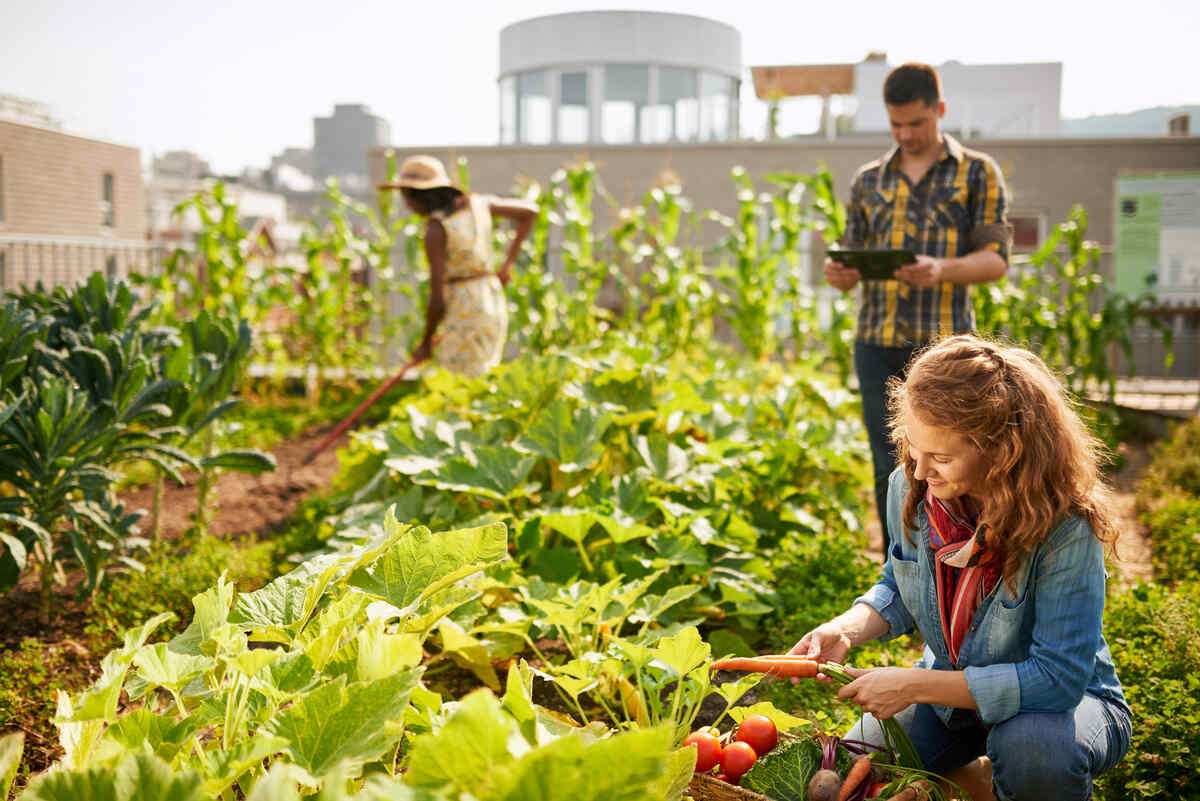Top Guidelines Of City Blooming
Top Guidelines Of City Blooming
Blog Article
Not known Incorrect Statements About City Blooming
Table of ContentsOur City Blooming StatementsGetting The City Blooming To WorkOur City Blooming IdeasCity Blooming Can Be Fun For EveryoneCity Blooming Fundamentals Explained
Fascinated in expanding food for sale in the City of Chicago? Below is a checklist of often asked questions pertaining to the guidelines and regulations that growers must take into consideration when preparing an urban farming task.
The zoning change does not customize any type of various other codes handling composting, building permits, acquiring or renting City had property, service licenses or environmental contamination. There are existing codes that manage these problems and they continue to be completely result and may apply to your task. Community yards are usually possessed or managed by public entities, public companies or community-based organizations and kept by volunteers.
Urban ranches expand food that is planned to be offered, either on a not-for-profit or for-profit basis. As a result of their industrial objective, city farms need a business permit. Yes. An area yard is enabled to market excess produce that was expanded on site if the sales are accessory or secondary to the garden's primary objective defined over.
The smart Trick of City Blooming That Nobody is Discussing
The amount of compost material can not surpass 25 cubic backyards at any type of offered time according to the requirements in 7-28-715 of the City's Municipal Code. Since the dirt at many brand-new garden websites requires changing, garden compost, soil, timber chips, or other materials can be acquired to create or improve the growing area.

If a structure license is required after that the hoophouse will certainly be thought about an accessory building. You can learn more concerning the building permit requirements by calling the Division of Structures. The 25,000-square-foot dimension limit is meant to stop a solitary community yard from dominating an offered block or diminishing the block's existing domestic or industrial character.
The limit does not use to yards found in Public Open Area (POS) areas. Can there be greater than one community yard that is 25,000 square feet on a single block? Yes. The size limitation relates to private yards, not to individual blocks. No. Fence is not needed, however, gardens that have huge parking lot may be called for to set up secure fencing or various hop over to here other landscaping attributes.
The smart Trick of City Blooming That Nobody is Talking About
B1 & B2 areas call for that all commercial use activities be performed inside. R areas restrict industrial activity. The policies reflect the purpose and intent of the Zoning Code. Is secure fencing needed for metropolitan farms? Yes. Fences may be needed, together with landscaping and screening, for sure parking lot and outside job or storage space areas relying on place and the certain activity taking place.
Urban ranches require building permits and zoning approvals prior to construction (container and raised bed gardening etc.). Other kinds of city review might be needed depending on particular frameworks, tasks, size, landscape design, licensing, public heath and stormwater management issues.
Yes. The kind of permit is established by what is happening at the site. The Division of Business Matters and Consumer Defense can help determine the certain type of service license that's needed. Yes. Off road car park is required for the majority of industrial jobs in Chicago. The called for number of garage is based upon the number of staff members servicing website and not the square video footage of the growing area.
Not known Factual Statements About City Blooming

A metropolitan ranch can offer garden compost material created on website, nonetheless, the procedure needs to conform with the laws in 7-28-715 of the Chicago Municipal Code. Aquaponic systems are allowed indoors on urban ranches in several zoning areas.
As much as five hives or colonies of honey may be maintained as an accessory use. Beekeepers have to sign up with the Illinois Division of Farming. For even more details concerning the recommended zoning modification you might get in touch with the Department of Housing and Economic Growth, Bureau of Preparation and Zoning at 312.744.8563.
Farming in cities and metropolitan locations An urban farm in Chicago. Urban agriculture describes numerous practices of growing. https://city-blooming.webflow.io/, processing, and distributing food in urban areas. The term also applies to the area activities of pet husbandry, tank farming, beekeeping, and horticulture in a city context. Urban agriculture is distinguished from peri-urban farming, which takes area in country areas at the edge of suburban areas.
The Only Guide to City Blooming
, who look for to form social networks started on a shared principles of nature and community holism. These networks can create by method of formal institutional support, becoming integrated right into neighborhood community preparation as a "transition community" activity for sustainable urban growth.
Some of the very first evidence of urban agriculture comes from Mesopotamia.
Report this page